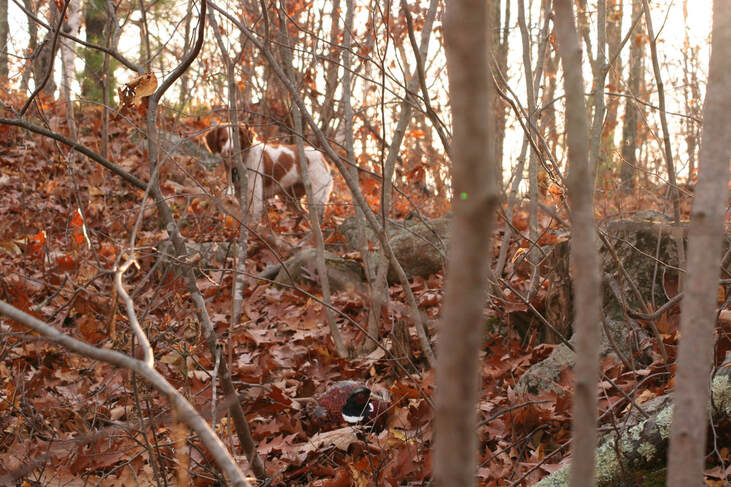Opening Day in Mass for Pheasant is finally here, it's time to get out and experience yet another part of the annual Fall Season. It will be a day of walking in the upland woods and fields. A cool morning with the eager anticipation of Bells ringing, from the collars of the dogs. Josie May will be moving side to side, always just a little bit ahead of us. Noses sniffing the cool air for a scent of the elusive bird. For Bird Hunters, it's time to “Kick them up, and knock them down”
Every year, Mass Wildlife stocks an average of 40,000 pheasants on Wildlife Management Areas (WMAs) and other lands open to the public. The birds are beautiful, fully feathered with long tail feathers. It doesn't take them long after they have been released to understand that man and dogs are not their friends and should be avoided at all times.
One of the biggest problems that hunters encounter, and it’s especially true for those who are new to the sport, is finding productive places to hunt. Upland bird hunting opportunities abound on the Wildlife Management Areas (WMA), Wildlife Conservation Easements (WCE) and other open spaces where the private property owner provides public access for hunting in the state. You can find a Link to the areas of the state public and private lands that are open to hunting here.
IF you have ever thought of getting out and trying to hunt the Ring Neck Pheasant and do not have a dog, here are a few tips that I have learned through the years.
1. Hunters often move through cover too fast. Pheasants simply lay low and then circle behind when the threat is gone. Work through cover in a zigzag fashion. Another good way to get roosters to flush is to pause frequently. A brief stop is just enough to get a bird holding tight to lose confidence and take to the skies.
2. Pheasants move through various types of habitats throughout the day. This movement leaves them holding to the edges of cover. Hunters will target big chunks of habitat, but it is important to check out places like fence lines and ditches. Anywhere one type of pheasant habitat transitions to another can offer excellent opportunities.
3. Many pheasant hunters have their feet by the fire in the late afternoon. They could be missing some of the best hunting of the day. Pheasants start moving out of heavy cover and into more open areas during the later hours of the day. Grassy patches along fields are classic cover spots for the ringnecks.
4. Cattail marshes are always good cover for pheasant hunting. They birds don’t get a lot of pressure early in the year when water is present. However, once the temperature gets cold in late November, the ice starts to form. It can become thick enough for you to walk on. Now is the best time to move through those cattails and find those birds that have been enjoying literally no hunting pressure all season.

 RSS Feed
RSS Feed